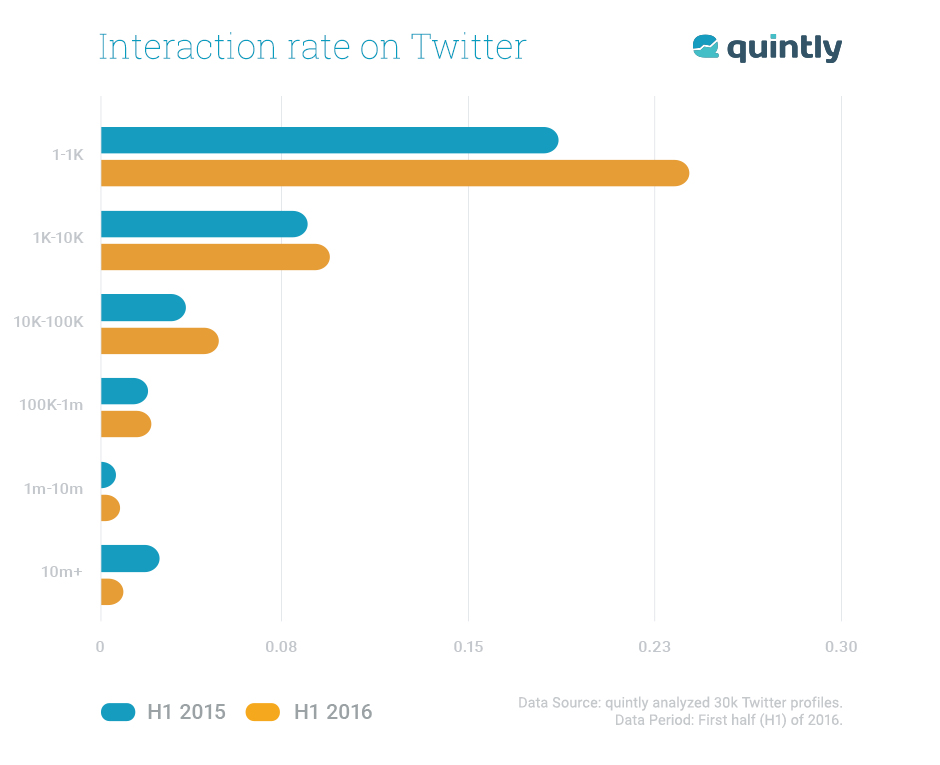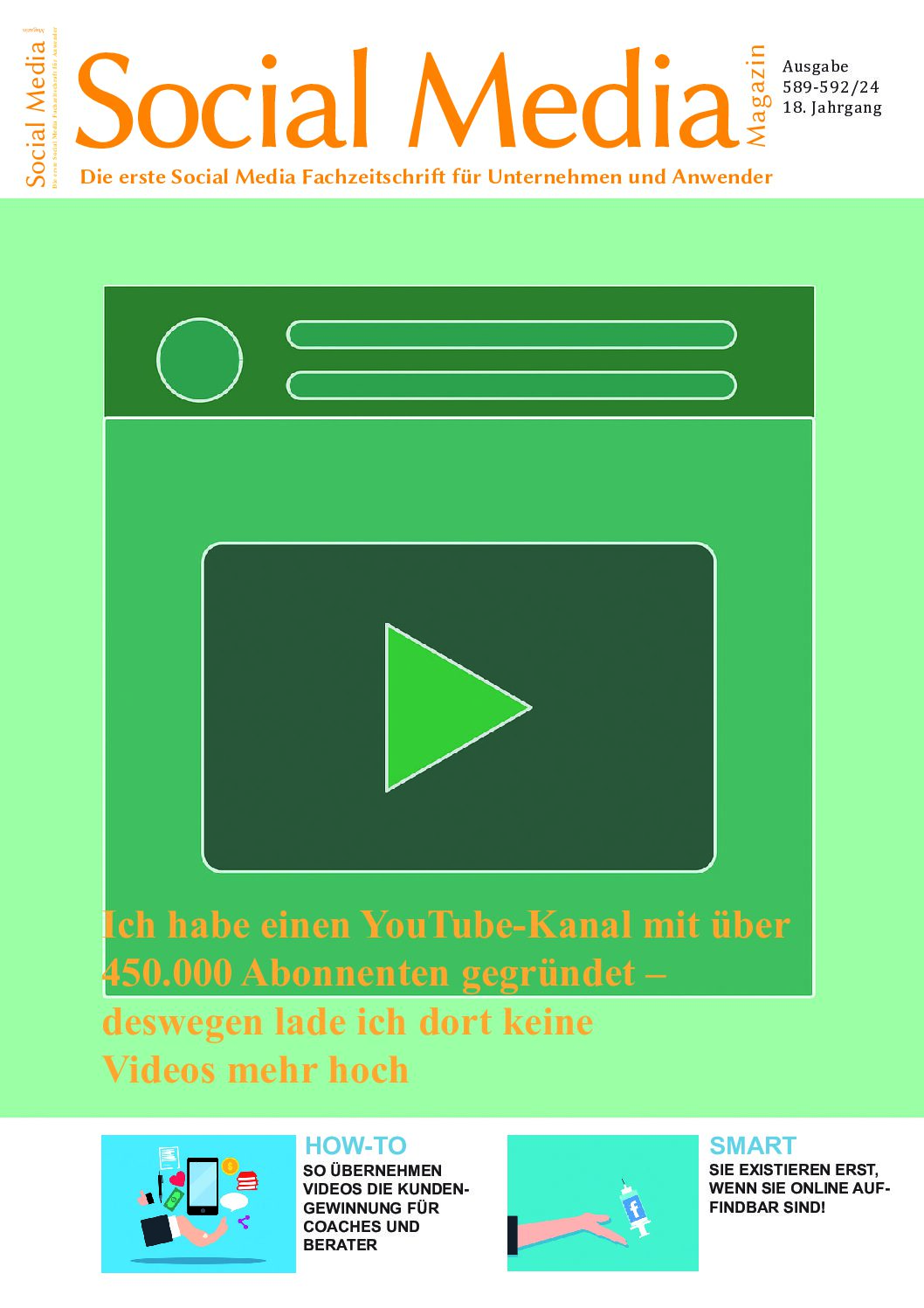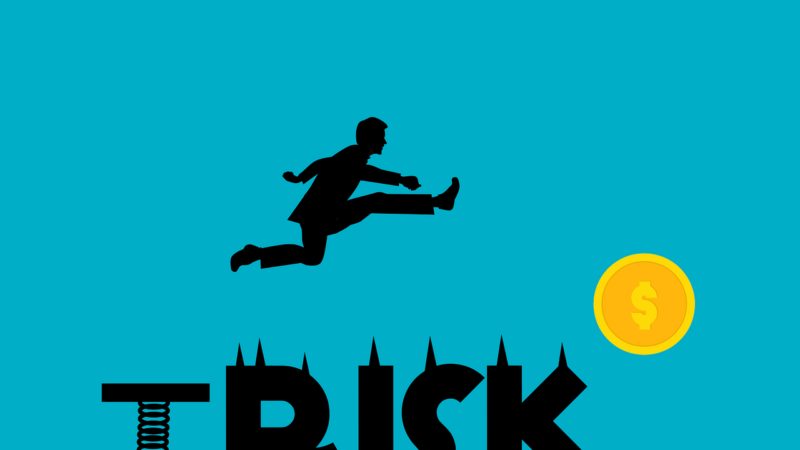Twitter-Studie: Einbruch von Interaktionen für größte Profile

Kleinere Profile konnten im ersten Halbjahr von Twitter profitieren
Twitter-Studie Zentrale Erkenntnisse: Starker Einbruch bei Interaktionen von sehr großen Profilen, steigende Interaktionszahlen bei kleineren Profilen, Anzahl an Tweets bleibt konstant, Followerwachstum nimmt ab.
Der Social-Media-Analytics-Anbieter quintly hat eine neue Twitter-Studie für das erste Halbjahr 2016 veröffentlicht und analysierte dafür 30.000 Profile. Das Analyticsunternehmen präsentiert Ergebnisse, welche für Firmen, die auf dem Microblogging-Service aktiv sind, relevante marketingbezogene Entwicklungen zeigen. Die Anzahl der Interaktionen für die Gruppe der Profile mit den meisten Followern sank im Vergleich zur ersten Jahreshälfte 2015 um 58%. Kleinere Profile hingegen erhalten nun mehr Interaktionen als im Jahr zuvor.
Um die Studie einer breiten Leserschaft zugänglich wie auch verständlich zu machen, konzentriert sie sich auf die zentralen Kennzahlen (KPIs). Die Ergebnisse werden knapp dargestellt und diskutiert. Durch die Aufteilung in sechs Größencluster sind die Funde für alle Marketingmanager von praktischem Wert.
Twitter-Studie:
It is time for our first Twitter study in which quintly take a closer look on the first six months of 2015 and 2016. We analyzed a huge amount of Twitter profiles, 30k if you want to know the exact number, but don’t expect a simple resume of boring numbers and data. This study provides an interesting in-depth insight into the logic behind Twitter, and works out specific details of usage and strategies of the micro blogging channel. Keep in mind that this study is not only beneficial for marketers but also for everyone else that wants to learn more about the behavior of Twitter. The numbers will not only help you to understand the changes that happened in comparison to the first half of 2015 year, but also provide an understanding of the distribution of engagement on Twitter. We categorized the analyzed profiles in six different groups, so that every marketer is able to benchmark their own performance against the individual average. Are you so excited as we are about the results? So let’s get started!
Follower growth falls by 40% compared to the first half of 2015
As part of many marketing strategies, the follower growth is an important indicator for the success of a business on Twitter. More followers enable brands to reach a bigger audience. For this reason the first metric we focus on is the follower growth. Our first finding reveals, that compared to the first half of 2015 the follower growth in the first half of 2016 has declined by 40%. Having said that, the first half of 2016 also shows, that the average follower growth on Twitter remains unchanged, and leveled off to 4%. We indicate from this finding that Twitter gets more saturated and mature as a network.
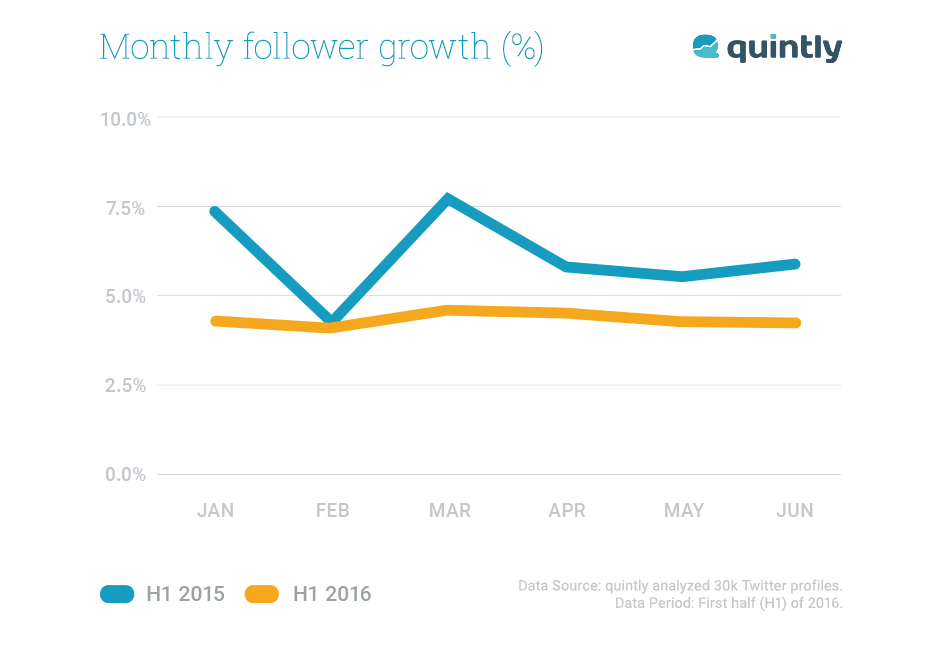
Number of daily tweets remain unchanged
The second metric we take a look at is the number of daily tweets. Twitter is for many businesses a good way to share their content marketing efforts with their followers. By taking a look at the chart you can notice that the number of daily send out tweets in 2016 has been continuing in more or less the same frequency as in the first half of 2015. To sum things up, the tweet frequency slightly varies from month to month, but remain stable between both years.
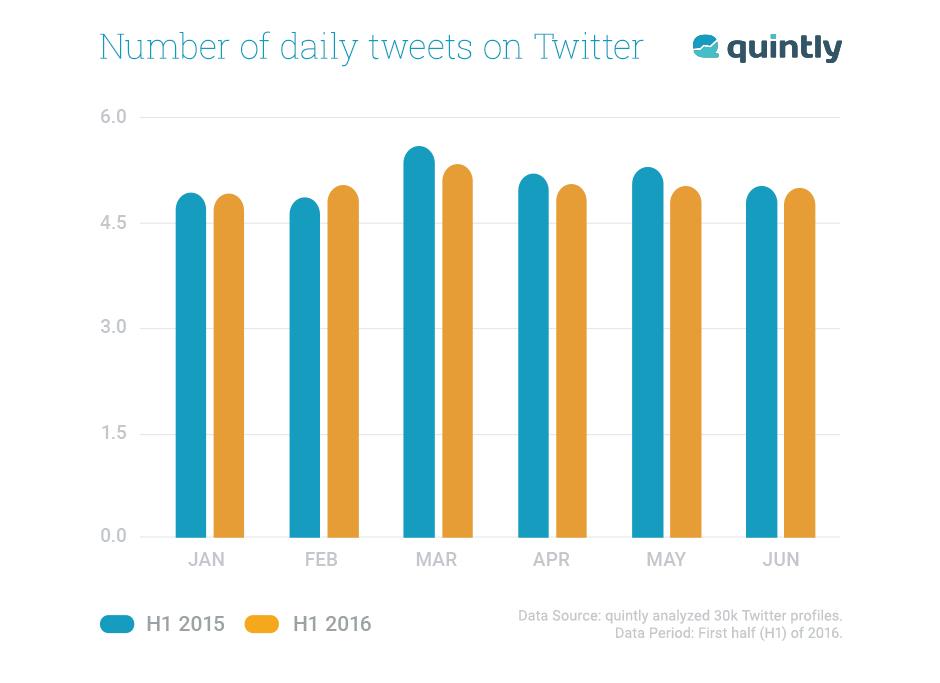
Interaction Rate rises for smaller profiles
Now we want to dig deeper into the interaction rate on Twitter. To understand the following developments, it is crucial to give you further information on what the interaction rate exactly takes into consideration. The interaction rate consists of all interactions (Retweets, Favorites, Replies) divided by posts and followers, that means if the analyzed profiles gain more followers or tweet more frequently, the rates goes down.
The most interesting fact linked to the interaction rate, that compared to 2015, is in the first half of 2016 which shows a rise in interaction rates for almost every profile cluster we have analyzed. Surprisingly, only the profiles that have more than 10 million followers have a decreasing interaction rate compared to the previous year. As seen in the metric below five out of six analyzed profiles clusters of our data set were able to increase their interaction rate between the analyzed years. Thus, Twitter can be a very effective social media network for businesses of all sizes. In comparison, the interactions of the biggest profile clusters, which mostly are celebrities, went down by more than 50%.
